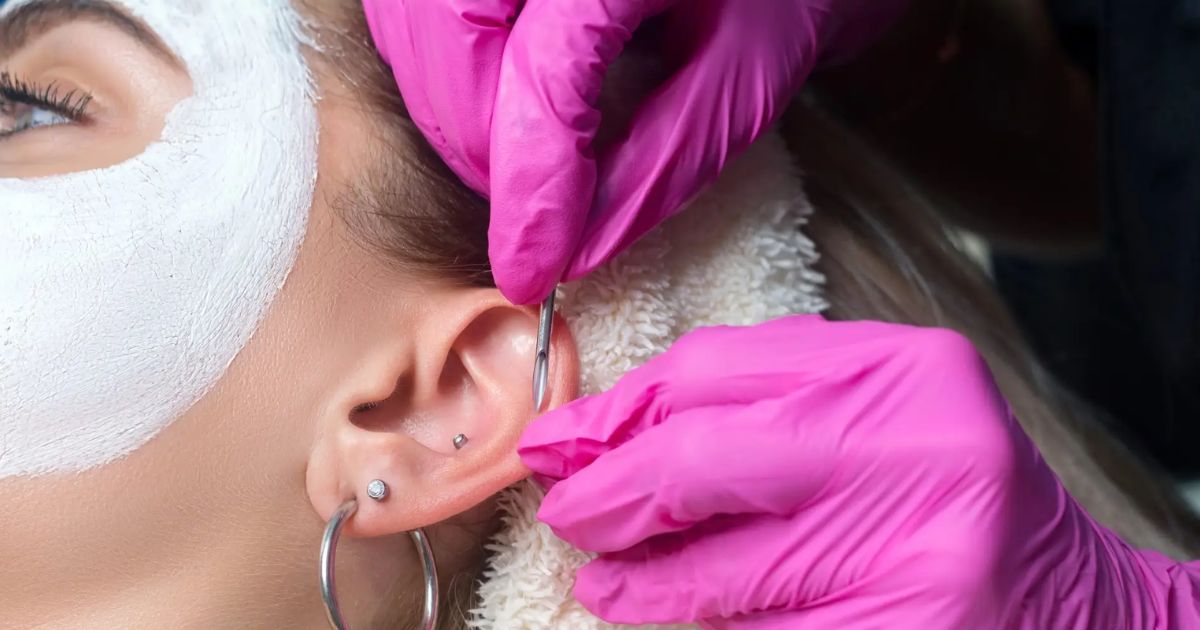If you’re thinking about getting a conch piercing, you probably have a lot of questions. A conch piercing goes through the inner cartilage of your ear not for the faint of heart. This guide will walk you through everything you need to know before getting your conch pierced, from pain level and healing time to jewelry options and proper aftercare. Read on for your complete conch piercing 101.
Fast Facts
Conch Piercing
- Location: Through the inner or outer cartilage in the center part of the ear
- Cost: Typically $30 or more, not including jewelry
- Pain Level: Moderately painful, around a 6 on a scale of 10
- Healing Time: Fully heals in 3 to 9 months
- Aftercare Tips: Clean piercing 2x daily with saline spray. Don’t sleep on it. Avoid earbuds and twisting jewelry.
What Is a Conch Piercing?
A conch piercing is located in the center part of your ear, through the thick piece of cartilage that looks like a shell (hence the name “conch”). It’s essentially a pierced hole through the inner cartilage of either the upper or lower part of your ear.
There are a few variations of conch piercings:
Inner conch piercing: This goes through the very center of the inner ear cartilage. This is the most common conch piercing. Lower conch piercing: This piercing goes through the thicker lower portion of the inner ear cartilage, near where the earlobe connects to the head. Upper conch piercing: The piercing passes through the upper inner cartilage, above the canal opening. Outer conch piercing: Although less common, the piercing can also go through the outer rim of the ear cartilage. Conch piercings are commonly gauged to larger sizes after initially being pierced. They’re popular for their versatility and the many jewelry options available.
Cost
On average, you can expect to pay anywhere from $30 to $80 for a conch piercing. However, the price ultimately comes down to several factors:
The studio: Higher-end studios with more experienced piercers will charge more. Avoid bargain studios to ensure safety and proper technique.
Jewelry type: More expensive metals and stone jewelry will increase the initial cost. Internally threaded or threadless jewelry is best.
Location: Studios located in major cities or metro areas typically charge more due to higher rents and costs of business.
Experience of the piercer: The more skilled and seasoned the piercer, the pricier the piercing may be. It’s worth it to pay more for a better experience.
You’ll also need to account for the cost of aftercare supplies and saline spray or soap, which can run you $20 or more. Additionally, you’ll likely invest in new jewelry down the road, incurring added costs over time.
Jewelry Materials Used for Conch Piercings
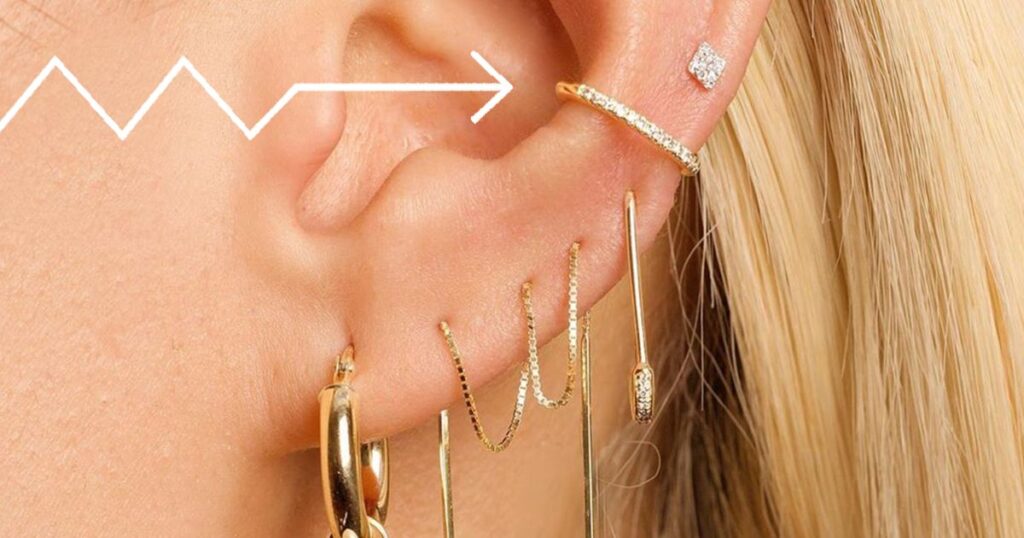
Only certain materials are safe to use for a new conch piercing during the initial healing period:
Titanium: One of the most hypoallergenic metals available, titanium causes the least reaction in sensitive skin. It’s lightweight, durable, and comes in several colors.
- Niobium: This is a lightweight metal that’s safe for those with metal allergies. It’s more expensive than titanium but similarly durable and hypoallergenic.
- 14k or 18k gold: High-quality solid gold makes a nice metal for conch piercings. It’s expensive but suitable for sensitive ears. Avoid gold-plated jewelry.
- Glass or plastic: Glass plugs or plastic labret studs are inexpensive starter jewelry options, though not as durable as metal. Great for new piercings.
Avoid mystery metals, stainless steel, nickel, chrome, and sterling silver, as these can irritate the new piercing. Once healed after several months, you can explore other metals or materials.
Types of Jewelry Used for Conch Piercings
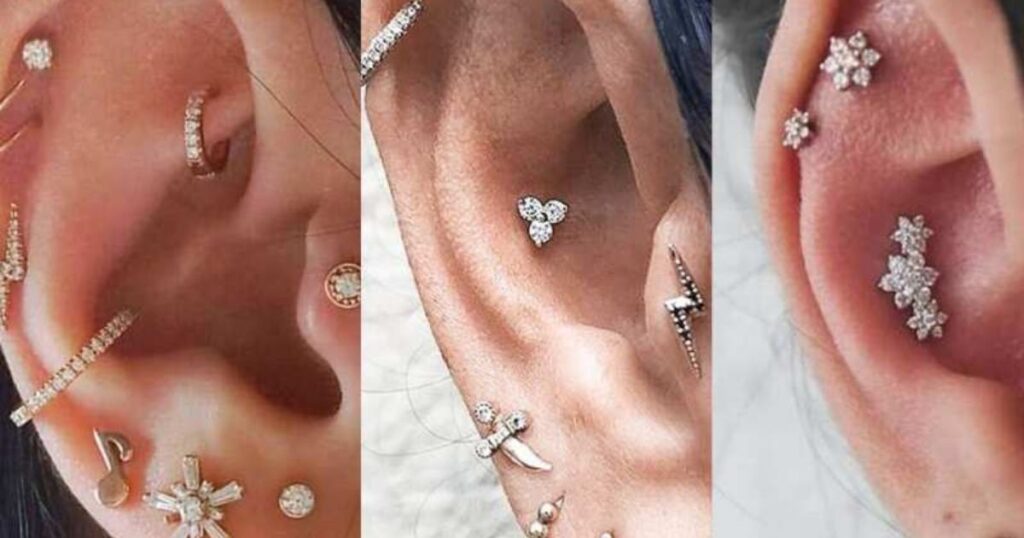
For the initial conch piercing, a stud is necessary to allow for swelling and healing. Here are some jewelry styles that work well:
Labret stud: The simple, cylindrical labret post with a flat back is the most common starter jewelry for conch piercings. They come in different lengths. Barbell: These have balls that screw onto either end of a straight bar, allowing room for swelling. They shouldn’t be used until the piercing has healed some. Circular barbell: These have balls that screw into each end of a circular bar shape. They can be worn in healed conch piercings. Curved barbell: The ends screw into a gentle curved bar shape. These are versatile for conch piercings.
Once healed after a few months, you can wear a variety of funky jewelry in your conch:
- Hoops
- Captive bead rings
- Plugs
- Spikes or cones
- Jeweled ends like opals or emeralds
Get creative with your jewelry once healed. Avoid cheap acrylic options that can irritate your piercing.
Pain and Healing Time
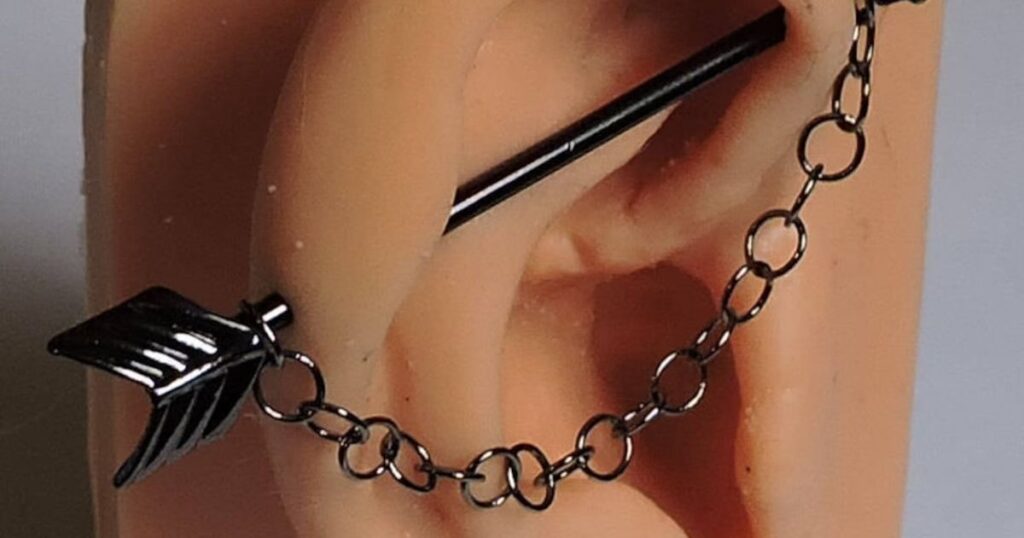
Let’s be real a conch piercing hurts. It goes through a very thick piece of ear cartilage, which has a lot of nerves. The actual piercing pain usually only lasts a few seconds, but expect some lingering soreness. Most people describe the piercing pain as a sharp pinch, bee sting, or headbutt feeling. Your eyes may water Clenching your fist or having someone squeeze your hand can help. Healing takes patience. Conch piercings take about 6 to 9 months to fully heal. Here’s what you can expect during the healing process:
- First 3 weeks: The most painful period. Swelling peaks at around 3 days. Take ibuprofen to reduce swelling. Rinse with saline spray 2-3 times daily.
- 1 to 3 months: Less swelling and tenderness. Some crusting still occurs. Rinse daily and watch for irritation bumps. Downsize jewelry at 6 to 8 weeks if needed.
- 3 to 6 months: Piercing continues maturing. Use saline spray 1-2 times daily. Most people can change jewelry around 3 months with caution.
- 6 to 9 months: Piercing should be mostly healed but continue rinsing when dirty and watch for trauma. By 9 months, the conch is healed enough for most jewelry.
Be extremely gentle with new piercings. Bumps, trauma, or infections can prolong the healing. Let it heal naturally before changing jewelry.
Aftercare
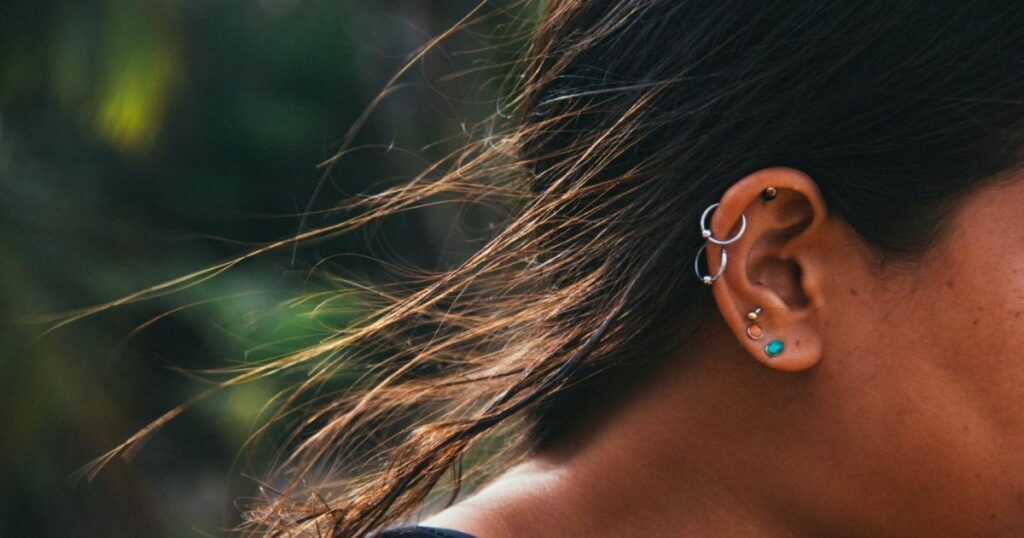
Proper aftercare is vital for any piercing, but especially for cartilage piercings like the conch. Follow these tips to promote healing and prevent infection:
Clean daily with saline spray or wound wash: Spray it over the piercing and let air dry. This removes crusties and debris. Avoid touching or moving jewelry: Don’t fiddle with the piercing. Let the crust discharge and naturally flake off when rinsing. Wash hands before contact: Wash up before touching near the area to prevent bacteria transfer. Avoid submerging in water: Take showers instead of baths. Avoid bodies of water like lakes which contain bacteria. Use clean bedding: Change out pillowcases regularly during healing. Blood and discharge can harbor bacteria. Avoid irritants: Be aware of hairspray, hair gel, or cosmetic products touching the piercing. Take ibuprofen for initial swelling: See your piercer at the first sign of infection like fever, increased swelling, pus, or redness. Proper aftercare prevents many issues.
Risks of a Conch Piercing
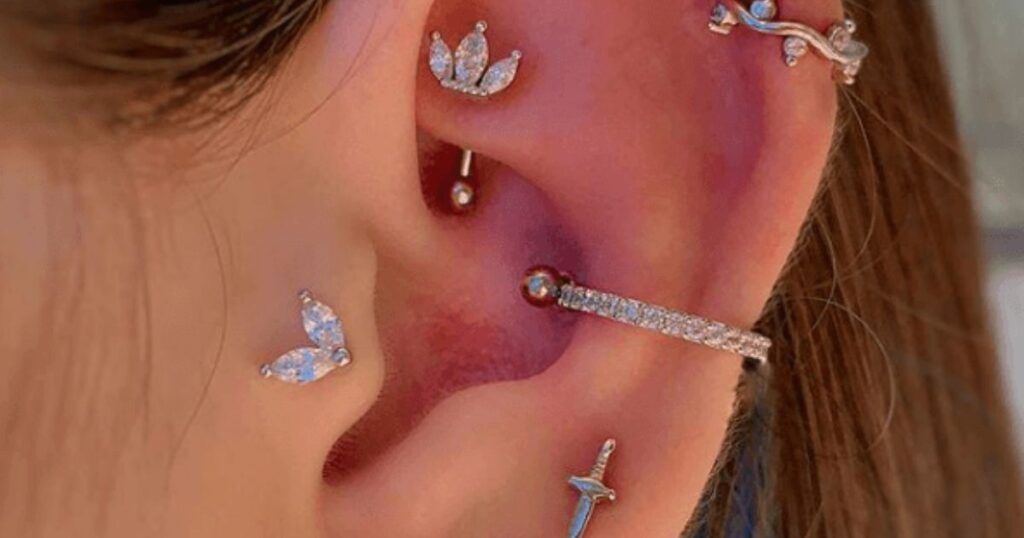
While relatively safe when done properly, a conch piercing does come with some risks to consider:
- Infection: Bacteria can enter the open wound and cause an infection. Signs are fever, pus, swelling, and redness. See a doctor for antibiotics if concerned.
- Bleeding: Some blood and discharge are expected, but excessive bleeding can occur. Apply pressure with clean gauze until it clots.
- Trauma: The conch area is prone to bumps and irritation. Be extremely careful not to knock the piercing, sleep on it, or get hair products on it.
- Allergic reaction: Though rare, an allergy to nickel or other jewelry metals can cause a rash, bumps, or itching. Switch jewelry immediately if this occurs.
- Tearing: If the piercing catches on something, the thin cartilage can tear. Be cautious around clothes, towels, brushes, headphones, etc.
- Scarring: While not that visible, trauma can lead to unsightly scarring on the cartilage. Take great care not to damage the piercing during healing.
- Rejection: In some cases, the body may reject the jewelry, especially if the piercing angle is off. Rejection causes irritation, migration, and discharge.
With proper aftercare and precautions, these risks are minimal. Pay attention to your body and see your piercer if any issues arise.
How to Change Out a Conch Piercing
Changing out a conch piercing too early can damage the fistula and cause complications. Here are some guidelines for safely switching jewelry:
Wait at least 2 to 3 months before initial jewelry change, longer if not fully healed. Wash hands thoroughly before handling the piercing. Sterilize jewelry by cleaning or soaking it.
Here is the continuation of the article: Gently insert the new jewelry. Avoid using harsh pressure or forcing it through the piercing. Use a taper if needed to guide new jewelry through, especially for hoops or rings. Never force jewelry through without a taper. Make sure the gauge size matches your original jewelry diameter. Too small will not go in, too big can cause damage. Avoid cheap acrylic jewelry, stick with implant-grade metals. New materials can cause allergic reactions. Expect some soreness or discharge for a few days afterward as the piercing adjusts. If the piercing becomes irritated, swollen, or bleeds heavily, switch back to your original jewelry until fully healed. Once healed after 6+ months, changing jewelry should cause minimal irritation or pain.
Take it slow when changing conch jewelry for the first time.Even healed piercings can shrink or tighten slightly, so patience and caution are key to avoid injury. Ask your piercer for help changing jewelry if you’re anxious. Over time it becomes easier.
FAQ’s
How much does a conch piercing hurt?
There will be a sharp pinch and pressure during the actual piercing, rating around a 5 to 8 on a pain scale of 10. Soreness lingers for a few days. Everyone has a different pain tolerance.
Can I sleep on my conch piercing?
It’s best to sleep with your ear out or up for at least a few months during healing. A travel pillow with a hole prevents pressure on the area.
How do I clean crusties on my conch piercing?
Do not pick them off, simply rinse the area in the shower or with saline spray. Gently wipe away softened discharge with a paper towel or cotton swab.
Why is my conch piercing sore after a few months?
This can be normal during the healing process as tissue continues regenerating. But be sure to rule out infection or trauma as the cause. See your piercer if concerned.
When can I change my conch jewelry?
Wait at least 2 to 3 months before initial jewelry change. By 6 months, you can likely change it more freely without irritation. Seek piercer help if needed.
Conclusion
If you’re up for a bit of pain and careful aftercare, a conch piercing can be a gorgeous addition to your ear. Knowing what to expect from the piercing process, jewelry options, and healing times allows you to make an informed decision. From piercing location to aftercare, this guide covers everything you need to know about conch piercings. Just be sure to find an experienced professional piercer, allow plenty of healing time, and care gently for the piercing each day. With patience and the right information, you’ll be rocking some fabulous conch bling in no time.
